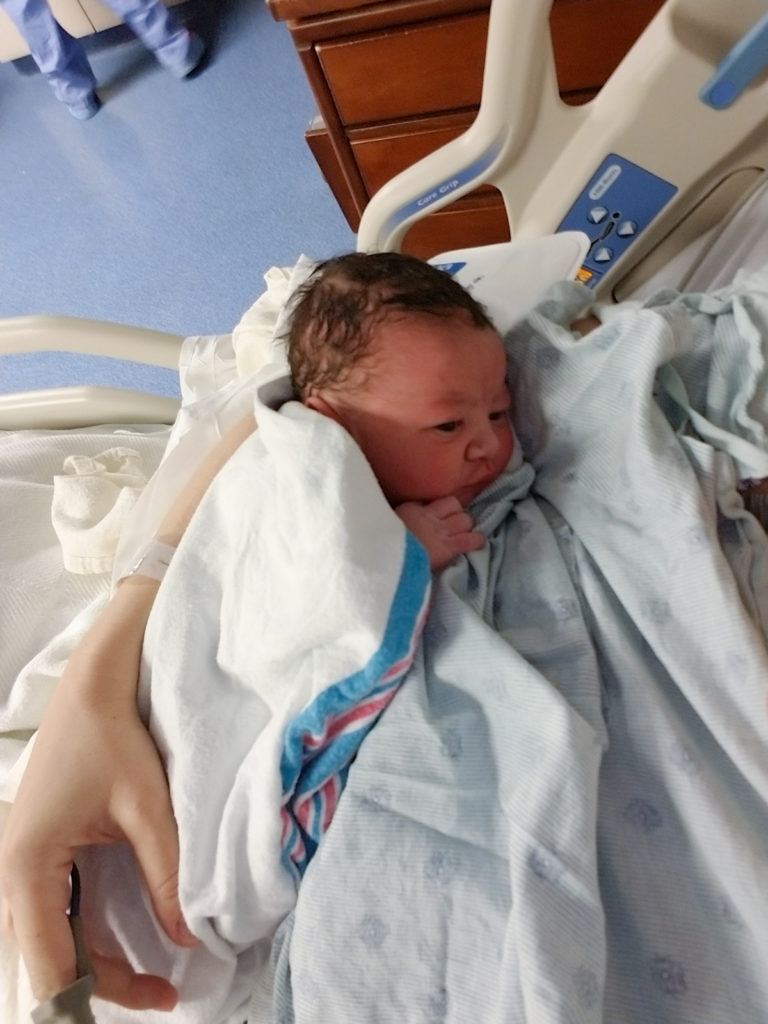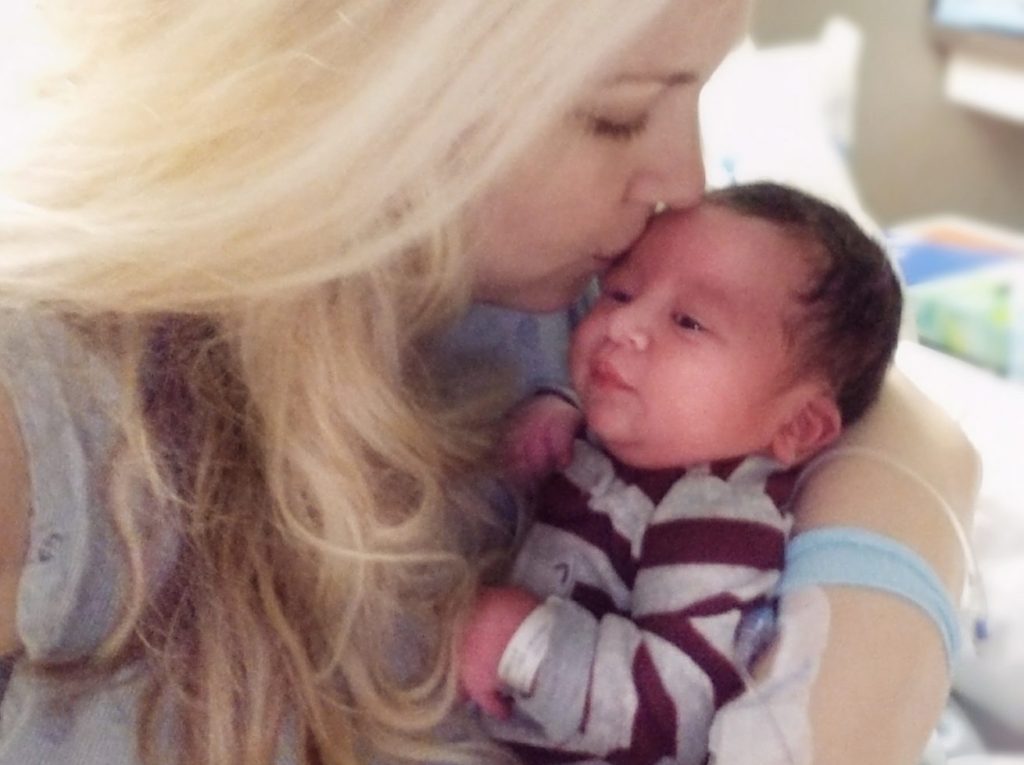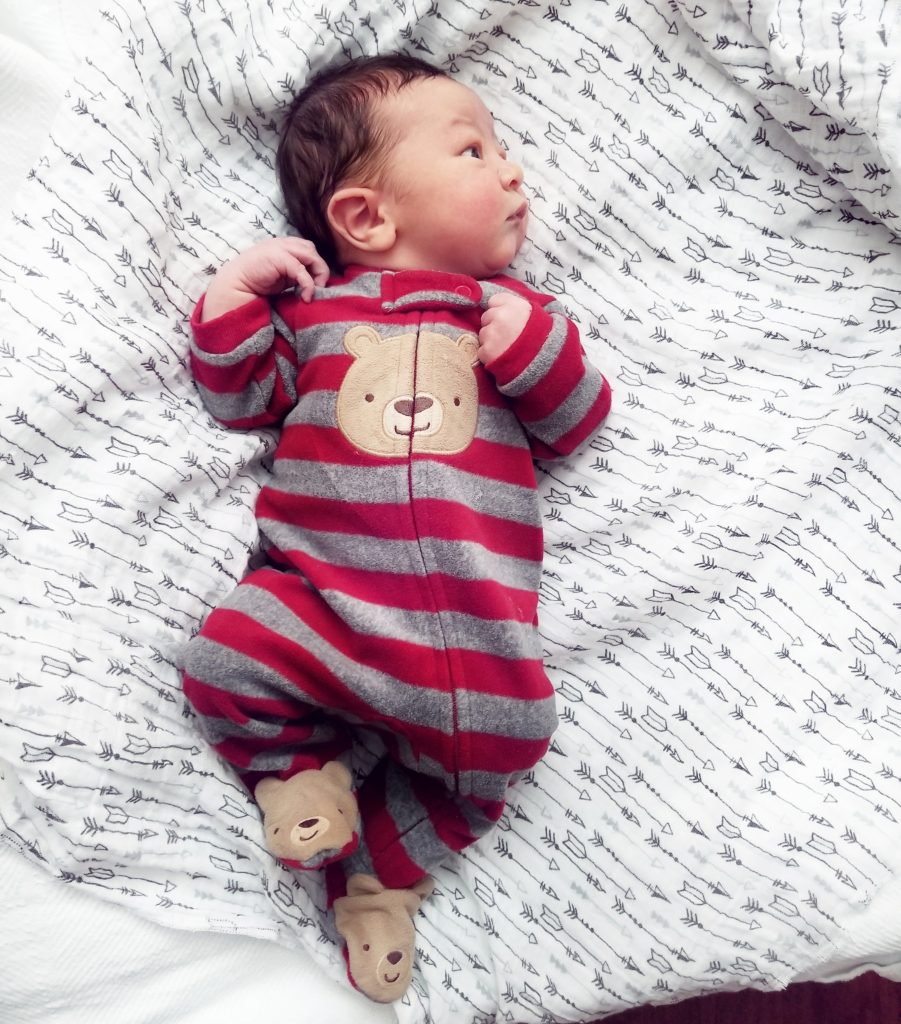Preparing for the C-Section I Didn’t Want

A c-section was a last resort on my birth plan. I really didn’t think it could happen to me. But when emergency circumstances made it my best option, I was really glad I had at least considered it.
It Helped to Know About Other Experiences
One of the things that may have prepared me the most in hindsight was hearing a story about my friend’s C-section. While we don’t want to dwell on the horror stories (especially when pregnant ourselves!), it’s really helpful to have a brief mental catalog of information to fall back on.
One of my friends was somewhat traumatized by a surprise C-section that left her feeling helpless with her newborn. If I hadn’t talked to her, I wouldn’t have realized how important supportive help is during the healing time. I wouldn’t have been as certain that I needed my husband to take off a full week of work to help me get back into the swing of things.
If I hadn’t heard other friends talking about their experiences, then I wouldn’t have known how common nerve damage is and that it was totally normal for clothes to feel uncomfortable against my healing skin. It wouldn’t have occurred to me that granny panties and high-waist sweatpants might be a good go-to until the nerves calmed back down.

I Wrote a Birth Plan
With my first kid, I actually typed out a birth plan and gave one to my OB and my nurses. It was helpful to think about what I wanted to occur and type it out. You can’t fully plan for birth, but you can wrap your mind around options and priorities. You can choose a physician that practices medicine with those same priorities. Some doctors take more natural approaches, while some are more conventional. Thinking through a birth plan really helped me know what questions to ask my doctor.
- What percentage of episiotomies do you do each year?
- Do you ever use the forceps/vacuum and in what cases?
- How do you feel about natural (no pain) births verses medication/epidurals?
- What percentage of C-sections do you do each year?
- How do you feel about the importance of breastfeeding right after birth?
- How long does it typically take for the baby to be in the mother’s arms after birth? What about after a C-section? (Some doctors are more concerned about skin-to-skin and really push for this).
I didn’t ask all my questions in one visit because I didn’t want to seem like I was grilling him. Asking the most important medical stats questions first helped me decide if he was the right doctor for me.
I usually tried to find at least one or two questions to ask each visit because there were so many things I didn’t even know that I didn’t know. If it ever came down to an emergency, I didn’t want to question the doctor’s orders or opinion on care. I wanted to know that I agreed with him on the points that mattered most. Having that trust established in my mind early on turned out to be incredibly important.

C-Section Rates are Extremely High
Today, a lot of people bring their “Google degrees” to the doctor’s office. I wanted to choose a professional I could trust more than myself. I did a lot of initial research by contrasting midwifery practice to conventional medical practice. It was helpful to see the opinions and research on both sides of the fence. With your first baby, you can be a little crazy and overly prepared like that.

After that first birth, I didn’t bring the physical birth plan with me. I knew the only unusual thing I needed to tell the nurse was to avoid the antibiotic ointment usually applied to baby’s eyes. My doctor aligned with all my other medical preferences. He also had very low statistics for episiotomies, C-sections and other medical procedures I hoped to avoid.
Did you know that the C-section rate in the US is one out of every three births?
Many C-sections are not entirely necessary and might not have been the choice of the woman. This shockingly high number has skyrocketed from the 5% rate in the 70’s to 32% in 2015, according to the American Congress of Obstetricians and Gynecologists. Just having upfront information and checking with the medical practices of your provider can reduce your risk of having an unplanned and unnecessary C-section.
The Negative Aspects of C-Section
With a C-section, you are undergoing a major surgery and will have weeks of recovery time. Unlike vaginal delivery, you cannot lift heavy objects or drive for the first two weeks. Your ability to sit up, walk, cough and go to the bathroom will all be affected by the large incision in your abdomen. You will probably need to take pain meds and antibiotics, which are considered safe for the baby, but aren’t ever ideal.
A C-section also means you may not be able to have skin-to-skin or nurse immediately after birth. You aren’t free to hold your baby like you might want to. I actually had to wait an extra hour to hold or nurse my baby. That was hard. I was really glad my husband was there and able to bond with him while I was unable to do it.
You need to have help during those first few days (at least) to care for yourself and your baby. More than likely, you will have nerve damage around your scar area that feels like painful popping or buzzing under the skin. You will want to have hi-rise underwear and pants that will go over the scar, since the scar is located just above your bikini line and right where most mid- or low-rise jeans hit.

The Positive Side of C-Sections
You realize very quickly when the baby is in danger that the speed of a C-section is ideal. In my situation, the baby’s oxygen was cut off by a prolapsed cord and they did my unplanned C-section in under 5 minutes. It was chaotic. It was not what I wanted. But I was so grateful that it was an option.

At the end of the day, I knew that I trusted my doctor to make that call and I was so fortunate to have a safe C-section as an option. Klay was born blue. Without that surgery option, he might not have made it into the world. Instead of feeling defeated or traumatized, I felt an insane amount of adrenaline, calmness and gratitude. I actually felt stronger after my surgery than on my first three “traditional” births.
I don’t see any shame in C-section births. They’re certainly not easier. They aren’t “less than” and that 4” scar is just one more battle wound backed by a story. Most people don’t choose them as a first option. Any way a baby is brought into this world by a mother is an amazing and beautiful feat.
Every expecting mother should have a basic knowledge of possible outcomes. You don’t want to feel completely in the dark when things don’t go according to plan. I think that is why C-section awareness is important. Know your options and where you would want them to fall in your birth plan.

